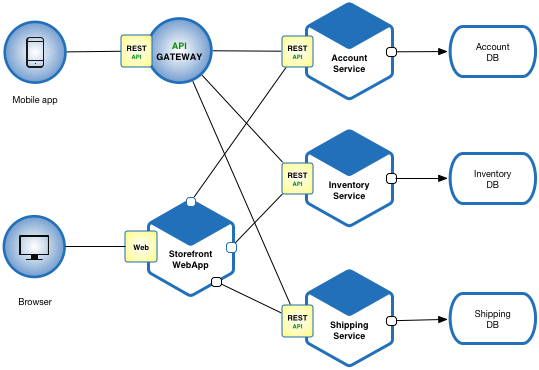Welcome to the world of Microservice Architecture, where software development reaches new heights of flexibility and scalability. In this article, we will delve into the essence of this revolutionary approach, exploring its benefits, components, and challenges. So, fasten your seatbelts as we embark on a journey to understand the intricacies of Microservice Architecture.
Introduction to Microservices
Microservice architecture is a modern approach to software development that emphasizes breaking down applications into smaller, independent services. These services, known as microservices, are self-contained and communicate with each other through APIs. This architecture offers several benefits, such as increased scalability, flexibility, and faster time to market. By adopting a microservice architecture, businesses can reduce risk and complexity, as failures are isolated to individual services rather than the entire system. Additionally, microservices enable teams to work independently, promoting innovation and allowing for faster development cycles.

Designing a Microservice Architecture
Designing a microservice architecture involves strategically breaking down a monolithic codebase into smaller, self-contained components called microservices. These microservices communicate with each other through APIs, allowing for better scalability, flexibility, and innovation in business software development.
By adopting a microservice architecture, businesses can reduce the risk of failure and improve time to market, as changes can be made to individual microservices without affecting the entire application. Furthermore, the use of containerization platforms like Kubernetes and message brokers can enhance communication and simplify deployment.
When designing a microservice architecture, it is important to consider factors such as coupling, complexity, and the need for interface standardization. It is also essential to follow design patterns and best practices, such as cloud-native principles, to fully leverage the benefits of a microservice architecture.
Migrating from Monolithic to Microservices
First and foremost, Microservices is an architectural style that emphasizes breaking down an application into smaller, independent components. These components communicate with each other through well-defined APIs. This decoupling allows for greater flexibility, scalability, and resilience.
To start the migration process, it is important to thoroughly analyze the existing monolithic codebase and identify the different functionalities and dependencies. This analysis will help in defining the boundaries for each microservice.
Once the boundaries are defined, it’s time to design the communication between microservices. This can be achieved through various methods such as RESTful APIs, message brokers, or event-driven architectures.
In terms of implementation, there are various technologies and tools available in the market. Popular choices include Kubernetes, AWS, and Oracle Cloud. These platforms provide the necessary infrastructure and services to deploy and manage microservices efficiently.
It is also important to consider the monitoring and logging aspects of the microservices architecture. Tools like TIBCO and AWS Microservices provide comprehensive monitoring and logging capabilities to ensure proper visibility into the system.
Red Hat’s Role in Microservices
Red Hat plays a crucial role in the world of microservices. As a leader in open-source software, Red Hat provides the necessary tools and technologies to build and manage microservice architectures. Their expertise in Linux and containerization enables developers to create scalable and flexible applications. Red Hat’s portfolio includes **DevOps** tools, **API** management solutions, and **message brokers** that facilitate communication between microservices. By leveraging Red Hat’s offerings, developers can design **cloud-native** applications that are resilient and adaptable to changing business needs.
Whether it’s using Red Hat OpenShift, integrating with **Oracle Cloud**, or deploying microservices on **AWS**, Red Hat provides the foundation for successful microservice architectures.
Comparing Microservices with Other Architectural Approaches
Understanding Microservice Architecture
Comparing Microservices with Other Architectural Approaches
| Architectural Approach | Advantages | Disadvantages |
|---|---|---|
| Monolithic Architecture | Easy to develop and test, simple deployment | Lack of scalability, difficult to maintain and update |
| Service-Oriented Architecture (SOA) | Loose coupling, reusability of services | Complexity in service coordination, performance overhead |
| Microservices Architecture | Scalability, independent deployment and development | Increased complexity, potential communication overhead |


